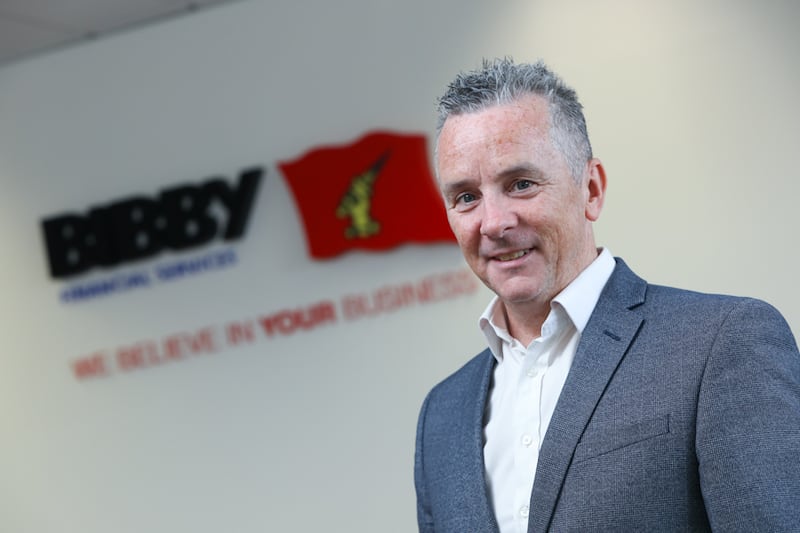For many businesses, debt is a key part of the capital mix; it can be used to help fund growth and asset purchases. But the reality is that it may be an expensive form of finance and, depending on the scenario, may not always be the best option. We ask financial experts for their views on the when, the how and the why of debt for businesses.
Paul Rickard, director, corporate finance, Forvis Mazars
From 2015 to 2022, negative interest rates made debt an attractive, low-cost option for financing mergers and acquisitions (M&A) and expansion. In contrast, cash-rich companies used this period to repay borrowings, avoiding the cost of paying interest on both loans and deposits.
Recently, however, rising interest rates have significantly increased the cost of debt, in some cases more than doubling the cost of capital. As a result, debt has shifted from an inexpensive funding source to a relatively costly one, leading companies to adopt a more conservative approach to borrowing.
During the negative interest rate environment from 2015 to 2022, leverage was the primary constraint on borrowing capacity. However, as lenders’ costs (often tied to Euribor) have risen, this has shifted that dynamic considerably, with a borrower’s ability to take on debt now being primarily restricted by debt service – effectively their ability to service and repay this new debt.
READ MORE
Different sectors may employ various metrics to determine appropriate debt levels. For example, in development or property finance, lenders might focus on loan-to-cost or loan-to-value ratios, while in acquisition financing, the debt/equity split may be more relevant.
Alternative/private lenders often have a different risk appetite compared to traditional lenders. They may evaluate prospective borrowers and even entire sectors differently, often offering greater flexibility on amortisation, distributions, and streamlined credit processes – albeit typically at higher interest rates.
In Ireland’s relatively small market, where several key lenders have exited recently, alternative lenders are playing a pivotal role in supporting borrowers and SMEs who have fallen into the increasingly prominent lender gap.
Brian Fennelly, partner, debt and capital advisory, Deloitte

For most established businesses looking to raise capital, the raising of debt financing tends to be the first source of capital considered, given that it is generally the lowest-cost third-party source of capital and negates the need for a shareholder to sell equity in their business.
While debt financing is the most cost-efficient source of third-party capital, it does come with financial obligations and restrictions, notably an obligation to repay amounts borrowed together with interest, within a certain period of time, the provision of security as collateral and financial covenants and other structural controls which serve to protect lenders’ interests.
Accordingly, when our clients are considering if borrowing is the right approach, and/or how much is the right amount, our approach as advisers is to determine a financing structure which achieves an optimal point where the capital raised is as cost-effective as possible, whilst still maximising day-to-day operational flexibility and minimising debt-related risks and lender restrictions.
The appropriate level of borrowing for a company is a level of financing which supports a company in achieving its strategic objectives without exposing it to undue financial risks. This analysis will be a function of numerous financial and non-financial variables, ranging from maturity of the borrower, quantum of capital to be raised and purpose of funds, to sector resilience and outlook, stability of historical and projected cash-flow generation, availability of security, shareholder equity alignment, and management team capabilities.
[ Vast majority of warehoused tax debt now paid or in process of being settledOpens in new window ]
Private debt from nonbank lenders, including credit funds, speciality asset-based lenders, venture debt providers, family offices and other lending platforms, have become an increasingly common financing option in Ireland for businesses seeking alternative sources of capital outside of, or in conjunction with, traditional bank loans or raising equity.
These lenders are not subject to the same regulatory and capital adequacy requirements that banks are; accordingly, nonbank lenders have greater scope to offer more flexibility to borrowers.
Convertible loan notes are debt instruments that can be converted into equity in the company at a later date, typically upon the occurrence of a specified event or milestone. These instruments represent a blend of debt and equity capital characteristics and offer several advantages for businesses looking to secure funding while maintaining flexibility and managing risk.
One common scenario in which convertible loan notes are used is during early-stage financing rounds for start-ups and high-growth companies.
Colm Sheehan, director, corporate finance, Crowe
Borrowing is typically a cheaper and more structured form of finance than equity. However, it can financially constrain a business if there are insufficient cash flows to support repayment terms. An established business that is cash-generative should seek to raise debt. Conversely, an early-stage business that is looking to grow and protect short-term cash flows might find that equity is the more appropriate source of finance.

Too much debt is debt that does not allow a business to develop and grow. When there are market opportunities that can’t be realised because debt repayments are placing too much of a cash flow burden on a business, it may be time to consider an alternative financing structure.
This could be in the form of refinancing to an interest-only loan or alternatively raising equity to replace the debt in the business. Non-bank (alternative) lenders offer benefits that pillar banks typically would not, such as flexible repayment terms and higher leverage.
An alternative lender will typically be higher up the risk curve than traditional lenders, and borrowing capacity can be greater. These will be counterbalanced by a more aggressive pricing structure, and a borrower will need to weight up the pros and cons of alternative debt against traditional debt.
David Martin, partner and head of EY capital and debt advisory
Debt is the best option when a business wants to maintain its existing shareholder base and, by extension, control. To be in a position to do so, the business must have built sufficient equity value to enable it to take on the debt which will be repaid first in the capital structure. It can also be a useful way of accelerating returns to shareholders.
Businesses need to ensure that the level of debt they carry is sustainable and accretive to the capital structure. A well-structured debt plan will mitigate many risks of raising debt and assessing your cash-flow requirements over the tenor of your debt facilities will help protect from being over leveraged.

Non-bank lenders are now an established part of the financing landscape in Ireland, similar to other more mature markets – this aligns with international convention. Rising interest rates have also allowed them to become increasingly competitive.
They typically participate in higher-leverage transactions or in sectors which are considered higher risk – for example, they have played a really important role in the commercial and residential development finance market in Ireland and have been a catalyst to the delivery of thousands of housing units. Given the higher leverage, they will be focused on alignment of interests with the borrower and the profitability within the transaction to provide downside protection.
Instruments such as convertible loan notes or mezzanine finance can be used where the equity gap needs to be bridged, albeit these are typically higher risk, meaning higher cost. These can come into play at the earlier stage of a business life cycle where a founder is keen to maintain control but where senior debt is not available. Over time, as a business matures and repayment capacity is established, it can refinance these with lower risk, lower cost forms of capital.
Stephen McCarthy, head of business development, Bibby Financial Services
While it does come with costs in certain scenarios, for many businesses borrowing can be a smart way to fund growth, manage cash flow or finance key asset investments. It’s particularly useful when expansion opportunities arise, such as acquisitions or management buyouts, or when cash is tied up in unpaid invoices.

However, it’s important to assess borrowing carefully. The most significant risks associated with external financing include over-leverage, interest-rate fluctuations and dependency on short-term capital. Interest payments, repayment terms and the impact on your balance sheet need to be weighed against the benefits.
Our recent research shows that 43 per cent of Irish businesses have suffered a bad debt in the last 12 months. This is a significant jump from 29 per cent last year and portrays the challenges SMEs are facing in the country.
These rising figures are quite striking, especially when almost two in three businesses who have suffered bad debt have been rejected for external finance. This demonstrates the impact of bad debt on SMEs’ ability to grow. As a result of these figures, it would be prudent of businesses to take a number of steps to ensure they don’t fall foul to non-payment such as updating credit control systems, completing full background checks on all customers before extending credit and ensuring strict payment protocols are enforced.
Non-bank lenders, such as Bibby Financial Services, can offer businesses a range of flexible and accessible financing options that traditional banks may not provide. They can offer tailored solutions like invoice finance, asset-based lending, and bad debt protection, which allow businesses to leverage assets like unpaid invoices or inventory to access funding.
These options can be more adaptable than traditional loans, providing businesses with increased liquidity to manage day-to-day cash flow, or assist with bigger growth aspirations such as management buyouts and acquisitions, without taking on long-term debt. Additionally, nonbank lenders can offer more personalised advice and services and a deep understanding of specific industries or sectors.












